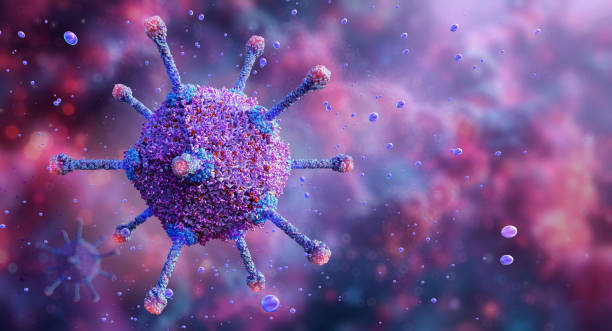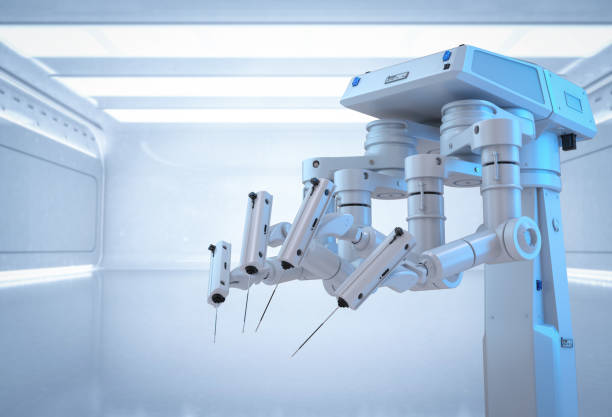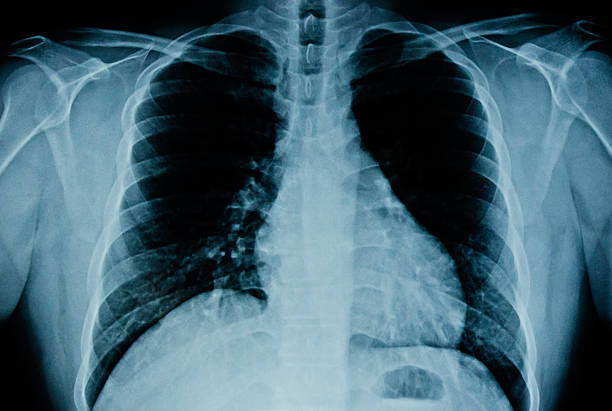When most of us hear the word virus, the first images that arise are those of illness, fever, and fear. We think of influenza, HIV, COVID-19, or the common cold. For centuries, viruses have been cast as invisible enemies, the unseen assassins that slip silently between cells, hijacking life itself to spread their own genetic code. Yet this view, though partly true, is only a fragment of their story.
Viruses are not merely villains. They are ancient, mysterious, and profoundly influential entities that have shaped life on Earth for billions of years. Their existence is older than humanity, older than mammals, older even than plants and animals. They may predate cells themselves. If we imagine Earth’s history as a vast library of living stories, viruses are not footnotes—they are co-authors.
Beyond their role in causing disease, viruses have secret lives that intertwine with the very processes that made complex life possible. They sculpt ecosystems, influence evolution, and may even hold clues to the origins of life itself. To see viruses only as killers is to overlook the greater, astonishing truth: viruses are weavers of the web of life, invisible architects of the living world.
The Origins of Viruses: Echoes from the Beginning
The origin of viruses remains one of biology’s most tantalizing mysteries. Are they degenerate remnants of once-living cells, stripped down to their genetic essence? Or are they ancient precursors to life itself, primal fragments that hint at the first sparks of biology in Earth’s primordial soup?
One theory suggests that viruses arose from mobile genetic elements—selfish stretches of DNA or RNA that gained the ability to move between cells. Over time, these nomadic genes learned to build protective protein shells, becoming capable of spreading like infectious seeds. Another theory holds that viruses once were independent cells that gradually lost their metabolic machinery, becoming leaner and more efficient as parasites.
Perhaps the most provocative idea is that viruses are older than cells. If this is true, they may be fossils of the pre-cellular world, remnants of a time when self-replicating molecules battled for dominance in a chaotic chemical landscape. In this view, viruses are not outsiders to life, but ancient kin—relatives from life’s earliest chapters, whispering of forgotten ages before DNA ruled.
What is certain is that viruses are unimaginably ancient. They are not intruders into the story of life; they are among its oldest characters. The genetic signatures of ancient viruses are still buried within our DNA, silent witnesses to battles and partnerships stretching back millions of years.
Viral Shadows in Our DNA
Every human carries within their genome the echoes of viral invasions. In fact, nearly eight percent of human DNA is made up of endogenous retroviruses—viral sequences that once infected our ancestors and became permanently embedded in their genetic code. These fragments are not merely inert fossils; some have been co-opted for vital functions.
One of the most stunning examples is the protein syncytin, derived from an ancient viral gene. Syncytin is essential in the formation of the placenta, the structure that nourishes developing embryos in mammals. Without this viral gift, mammals as we know them—including humans—might not even exist.
Viruses, then, are not simply destroyers. They are also builders, donating genetic tools that organisms have adapted for their own purposes. In a sense, we are part-virus. Our very ability to give birth, to continue our species, is owed to a viral inheritance buried deep in our DNA.
The Architects of Evolution
Life evolves not just by slow mutation, but also through leaps and exchanges. Viruses are some of the greatest drivers of genetic exchange on Earth. They act as couriers, transferring genes between organisms, a process known as horizontal gene transfer.
In bacteria, viruses called bacteriophages routinely shuttle genes from one microbe to another. Sometimes these genes encode toxins, transforming harmless bacteria into dangerous pathogens. Other times, they confer new metabolic abilities, enabling survival in hostile environments. The microbial world, vast and teeming, is constantly being reshaped by viral traffic.
This process is not confined to microbes. Across the tree of life, viruses have delivered genetic innovations that organisms have absorbed, tested, and sometimes kept. In this way, viruses have acted as hidden partners in the grand evolutionary dance, sowing genetic diversity that fuels adaptation and change.
If evolution is a symphony, viruses are the unseen composers, slipping new notes into the score, sometimes discordant, sometimes harmonious, always transformative.
The Planetary Engineers
Beyond the cellular and genetic scale, viruses play a colossal role in the balance of Earth’s ecosystems. In the oceans, which cover most of our planet, viruses are the most abundant biological entities, numbering an estimated 10³¹ particles. That is a one followed by 31 zeros—far outnumbering the stars in the universe.
Marine viruses infect bacteria and algae, bursting cells open and releasing nutrients back into the water. This process, known as the viral shunt, recycles organic matter and fuels the ocean’s food webs. Without viral recycling, the oceans would grind to stagnation, and the cycles of carbon and nutrients that sustain life would falter.
Viruses also influence climate. By killing algae, they release dimethyl sulfide, a gas that rises into the atmosphere and helps form clouds, which in turn affect global temperatures. Invisible as they are, viruses are planetary engineers, subtly shaping the climate systems that determine the fate of life.
Every breath we take, every meal we eat, every rainstorm that waters the land is touched by the unseen hand of viruses.
Viruses as Symbionts and Guardians
Though we often think of viruses solely as parasites, not all viral relationships are destructive. Some viruses live in symbiosis with their hosts, offering benefits in exchange for shelter.
In plants, certain viruses can provide resistance to drought or heat, allowing survival in harsh conditions. In animals, viruses can sometimes protect against other infections, occupying cellular niches and preventing more harmful invaders from taking hold.
Even in humans, there is evidence that persistent viral infections may help fine-tune our immune systems, keeping them active and alert. In this sense, viruses can be seen not only as enemies but as part of the ecological community that shapes health and survival.
Like fire, viruses can destroy, but they can also warm and sustain, depending on the context.
The Viral Universe Beyond Earth
The question naturally arises: if viruses are so abundant and ancient on Earth, might they exist elsewhere in the cosmos? Viruses, after all, are simple entities, requiring only genetic material and a protein coat. Their emergence might be a natural consequence of life’s evolution anywhere in the universe.
Some astrobiologists speculate that if extraterrestrial life exists, it may well include viral analogues. If so, viruses could play the same roles they do on Earth—shaping evolution, recycling nutrients, and driving ecological cycles. It is possible that viruses are not just Earthly phenomena, but universal ones, companions of life wherever it arises.
If one day we find life beyond Earth, we may also find viruses there, reminding us that the story of life is never written by cells alone.
Viruses and the Future of Humanity
In the modern world, viruses continue to influence human destiny, not only through pandemics but through biotechnology. Scientists now harness viruses as tools: viral vectors deliver genes in therapies for genetic diseases; engineered viruses may one day cure cancer; viral particles are being explored as vehicles for vaccines and nanotechnology.
Viruses, once feared only as destroyers, are becoming allies in medicine and engineering. They are teaching us how to manipulate life at its most fundamental levels, guiding us toward innovations that could transform health and technology.
Yet this alliance comes with responsibility. Just as viruses have shaped the past, they will shape the future. Humanity’s relationship with viruses is not one of war alone, but of coexistence, negotiation, and discovery.
The Mystery That Endures
For all our advances, viruses remain deeply mysterious. Are they alive or not? They straddle the boundary between chemistry and biology, replicating only within cells but persisting outside as inert particles. They challenge our definitions of life itself, reminding us that the line between living and nonliving is not as clear as we once believed.
Perhaps the true secret of viruses is that they embody life’s paradoxes: they are destroyers and creators, ancient and ever-changing, inert and yet brimming with potential. They remind us that life is not a simple narrative of good and evil, but a tapestry woven from countless interactions, seen and unseen.
In the end, to understand viruses is to understand life more deeply. They are not strangers to us but kin, part of our past, our present, and our future. Their secret lives are, in a profound sense, entwined with our own.
Conclusion: The Invisible Architects
Viruses, in their hidden roles, are not merely agents of disease but architects of life’s grand design. They whisper from our DNA, orchestrate the balance of ecosystems, and steer the currents of evolution. They are the unseen hands that shape clouds, forests, oceans, and even our capacity to give birth.
To see viruses only as enemies is to miss their greater story. They are threads woven through the entire fabric of life, ancient and enduring, subtle and powerful. They have written themselves into our genomes, our ecosystems, and perhaps into the destiny of life across the cosmos.
The secret lives of viruses remind us that life is not only about survival, but about connection. The smallest of entities, invisible to the eye, carry the greatest of lessons: that the boundaries between destruction and creation, between self and other, between life and nonlife, are thinner and more wondrous than we ever imagined.






